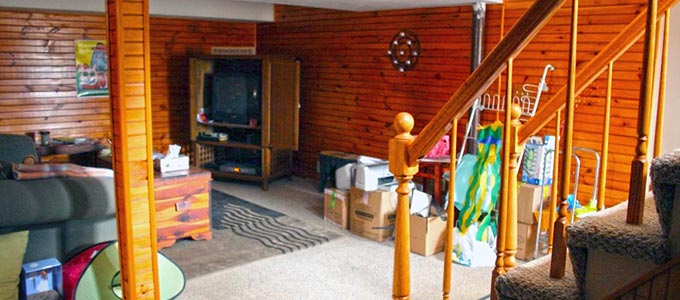Toronto is a wonderful place for lots of great things. With the old buildings, it has a beauty that is strictly unique to Toronto. The problem, however, is that the infrastructure is old, the homes are old and as a result, water damage is a battle that Toronto homeowners are warring against all year round. If you’ve reached the end of your (wet) rope, you can’t handle it anymore and that’s understandable. To figure out the problem and fix it at the core, the first step is to perform a water leak detection exercise and to understand the difference between interior and exterior basement waterproofing.
Interior Waterproofing
Here’s the thing about interior waterproofing: if there’s water getting into your basement, you are no longer “waterproofing” but water managing. When you think about it, why would you need waterproofing from the inside of your home? Unless you’re planning on dumping the contents of your hot tub into the basement, you’re not going to spontaneously get water inside the basement.
Think of it as your second line of defense against the war on invasive water. This is the enemy that manages to make it through your exterior foundation waterproofing and if you have a strong first line of defense, this shouldn’t be a problem. However, old homes can often mean old waterproofing systems that need to be updated or cracks in foundations that need repairing.
Types of interior waterproofing:
- Sump Pump System: This is a drainage system designed to collect the water that builds up from the weeping tiles around the basement and pushes it outside your house through a discharge pipe.
- Back Water Valve: A device that stops the sewage from an overloaded main sewer line from “backing up” into the basement of your home.
Exterior Waterproofing
Here is where the stuff really goes down. If you have a proper exterior waterproofing system that is functioning properly, you aren’t going to need to worry about interior waterproofing (although you can never be too safe!). Since older homes are a major part of Toronto’s appeal, you can run into issues with cracks in your foundation, old and outdated waterproofing. This is in addition to the frequent rainstorms that are common to the area, which can cause shifting in the earth around your home. This changes the landscape beneath the surface and affects your foundation further. So you want to make sure you focus on getting a strong line of defense, and it’s essential to budget for both water leak detection and ways to resolve the problem.
Types of exterior waterproofing:
- Foundation Waterproofing: Building the ground up surrounding your home to direct water flow away from basement walls. Make sure you examine the sidewalks carefully, along with any patios, driveways, and decks. These structures settle as time passes, and can end up pushing water back in the direction of your home.
- Downspouts: These should always face in the opposite direction from your home, not into the ground and absolutely not near any basement windows. You want to avoid water pooling around your foundation at all costs. It is also a good idea to disconnect these from a home’s sewer system to avoid the risk of water backing up.
- Emulsions and Plastic Membranes: This is an invisible sealant applied to the foundation walls, generally during construction. It works to seal out any water, but if there are cracks in the foundation (even tiny ones), they break the seal. The ground around your foundation will be dug up, water pumped out, and any cracks will have to be repaired before any emulsions or plastic membranes can be applied.
Don’t wait until you develop a problem with unwanted, invasive water. Most plumbers offer water leak detection services that will enable you to identify potential problems upfront and give you peace of mind that you have addressed them in advance.

